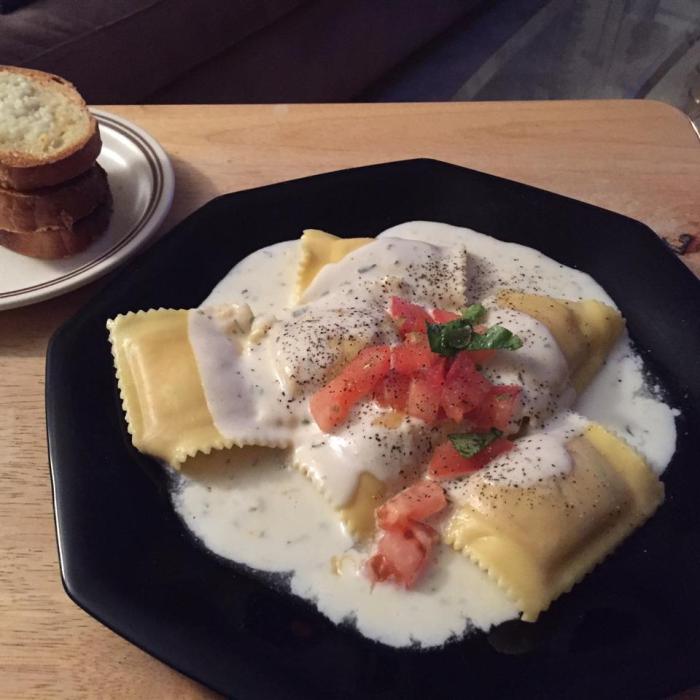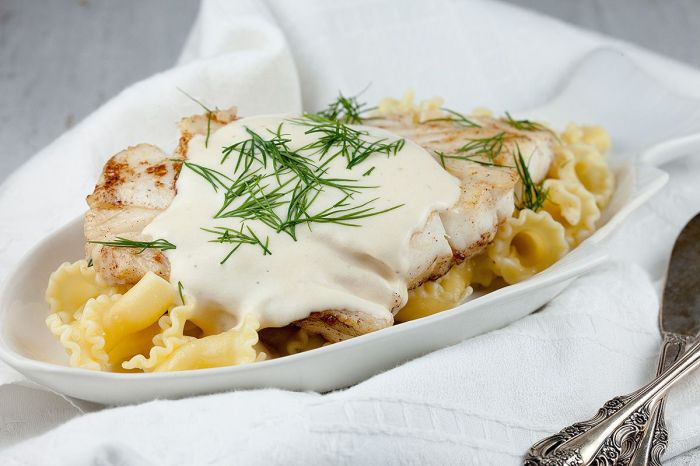Thick Creamy White Sauces: A Culinary Exploration
Thick creamy white sauce recipe – Thick creamy white sauces are culinary cornerstones, forming the base for countless dishes across various cuisines. Their versatility stems from their ability to be easily customized with diverse flavors and ingredients, transforming from a simple béchamel into a rich cheese sauce or a decadent Alfredo. This exploration delves into the history, techniques, variations, and applications of these indispensable sauces.
A History and Fundamental Components of Thick Creamy White Sauces
The evolution of white sauces is deeply intertwined with culinary history. While precise origins are difficult to pinpoint, variations have existed for centuries, with the classic French béchamel serving as a foundational element. The fundamental components of a classic thick creamy white sauce are a roux (a mixture of butter and flour), milk or cream, and seasonings. The roux provides the thickening power, the milk/cream lends richness and creaminess, and seasonings add depth of flavor.
Variations of Thick Creamy White Sauces
Numerous variations exist, each with unique characteristics and flavor profiles. These variations often involve the addition of specific ingredients, altering the base recipe to create distinct sauces.
| Sauce Name | Key Ingredients | Typical Uses |
|---|---|---|
| Béchamel | Butter, flour, milk, salt, pepper | Base for other sauces, gratins, vegetables |
| Cheese Sauce | Béchamel, cheese (cheddar, Gruyère, etc.), nutmeg | Pasta dishes, vegetables, dips |
| Alfredo Sauce | Butter, heavy cream, Parmesan cheese, garlic | Pasta dishes, vegetables |
| Mornay Sauce | Béchamel, cheese (Gruyere, Parmesan), nutmeg | Vegetables, seafood, gratins |
Ingredient Selection and Preparation
Using high-quality ingredients is crucial for achieving optimal flavor and texture. Fresh, high-fat milk or cream contributes significantly to the sauce’s richness and creaminess. For the roux, using good quality butter is essential for flavor. A smooth roux is paramount; achieving this requires careful whisking to prevent lumps.
Cooking Methods and Techniques
Several methods exist for creating a thick creamy white sauce. The traditional method involves gradually whisking milk into a roux, while alternative methods, like using a blender or food processor, can create an exceptionally smooth texture.
- Traditional Method: Melt butter, whisk in flour, cook until lightly golden, gradually whisk in warm milk, simmer until thickened, season.
- Blender Method: Combine all ingredients in a blender, blend until smooth, heat gently until thickened.
- Food Processor Method: Similar to the blender method, but using a food processor.
Flavor Enhancements and Seasoning

Source: media-allrecipes.com
Seasoning plays a vital role in elevating the white sauce from basic to extraordinary. Herbs, spices, and cheeses dramatically impact the flavor profile. Salt and pepper are fundamental for balancing flavors, ensuring the sauce isn’t bland or overly sharp.
Here are three flavor variations:
- Garlic Herb Sauce: Béchamel base, minced garlic, fresh thyme, parsley, salt, pepper.
- Mushroom Sauce: Béchamel base, sautéed mushrooms, white wine, thyme, salt, pepper.
- Spicy Cheddar Sauce: Béchamel base, sharp cheddar cheese, cayenne pepper, Worcestershire sauce, salt, pepper.
Thickening Agents and Consistency Control
Besides a roux, other thickening agents can be used, each offering unique properties. Cornstarch provides a clear, glossy finish, while flour results in a slightly thicker sauce. Arrowroot powder creates a smooth, neutral-flavored sauce. Adjusting the amount of thickening agent directly controls the sauce’s consistency—more for thicker sauces, less for thinner ones.
Serving Suggestions and Applications, Thick creamy white sauce recipe
Thick creamy white sauces are incredibly versatile, serving as a base for numerous dishes or as an accompaniment.
| Dish Name | Sauce Variation | Description | Image Description |
|---|---|---|---|
| Mac and Cheese | Cheese Sauce | Elbow macaroni coated in a rich, cheesy sauce, often baked until bubbly. | A golden-brown casserole dish overflowing with macaroni and cheese, the cheese sauce bubbling slightly at the edges. The macaroni is visible throughout, coated in a creamy, textured sauce. |
| Creamy Tomato Pasta | Béchamel with sautéed tomatoes | Pasta tossed in a sauce combining the creaminess of béchamel with the acidity and sweetness of sautéed tomatoes and fresh basil. | A plate of pasta, coated in a pink-hued sauce with visible chunks of tomatoes and fresh basil leaves scattered on top. The sauce has a glossy sheen, indicating its creamy texture. |
| Chicken Alfredo | Alfredo Sauce | Fettuccine pasta with tender chicken breast in a rich, creamy Parmesan sauce. | A plate of fettuccine pasta, coated in a thick, white Alfredo sauce. Pieces of tender chicken breast are visible throughout the pasta, and grated Parmesan cheese is sprinkled on top. |
| Scalloped Potatoes | Béchamel with nutmeg | Thinly sliced potatoes layered in a creamy béchamel sauce, seasoned with nutmeg and baked until golden brown. | A casserole dish filled with layers of thinly sliced potatoes, each layer coated in a creamy, light-brown sauce. The top layer is golden brown and slightly bubbly. |
Leftover sauce can be stored in an airtight container in the refrigerator for up to 3 days. Reheat gently on the stovetop, stirring frequently to prevent scorching.
Troubleshooting Common Issues

Source: ohmydish.com
Several issues can arise when making a creamy white sauce. Understanding their causes and solutions is crucial for consistent success.
- Lumps: Caused by insufficient whisking of the roux or adding cold milk too quickly. Solution: Whisk vigorously, use warm milk, or blend the sauce.
- Thin Consistency: Insufficient thickening agent or too much liquid. Solution: Add more roux or thickening agent, simmer longer.
- Curdling: Often caused by adding cold milk to hot butter and flour mixture or using acidic ingredients. Solution: Use warm milk, add a small amount of cold milk or cream to help emulsify the sauce.
FAQ Explained: Thick Creamy White Sauce Recipe
Can I use different types of milk?
Yes, whole milk generally provides the richest, creamiest texture. You can also experiment with half-and-half or even cream for a richer sauce, but adjust the thickening agent accordingly.
Mastering a thick, creamy white sauce is a fundamental cooking skill, providing a base for countless dishes. Its versatility extends beyond simple pasta sauces; consider how a rich white sauce could complement a dessert, perhaps paired with a contrasting flavor like the intense sweetness of a shelf stable caramel sauce recipe. The smooth texture of the white sauce would beautifully counterpoint the caramel’s stickiness, creating a delightful textural and flavor experience.
Ultimately, the possibilities for creative culinary combinations using a well-made white sauce are nearly endless.
What if my sauce is too thin?
If your sauce is too thin, you can gently simmer it for a few more minutes to allow the liquid to reduce. Alternatively, whisk in a small amount of cornstarch slurry (cornstarch mixed with cold water) to thicken it further.
What if my sauce is lumpy?
Lumps usually occur from improperly whisking the roux. Ensure you whisk continuously and vigorously while adding the milk to prevent lumps from forming. A blender or food processor can also help achieve a completely smooth texture.
How long can I store leftover white sauce?
Store leftover white sauce in an airtight container in the refrigerator for up to 3-4 days. Reheat gently over low heat, stirring frequently to prevent scorching.
